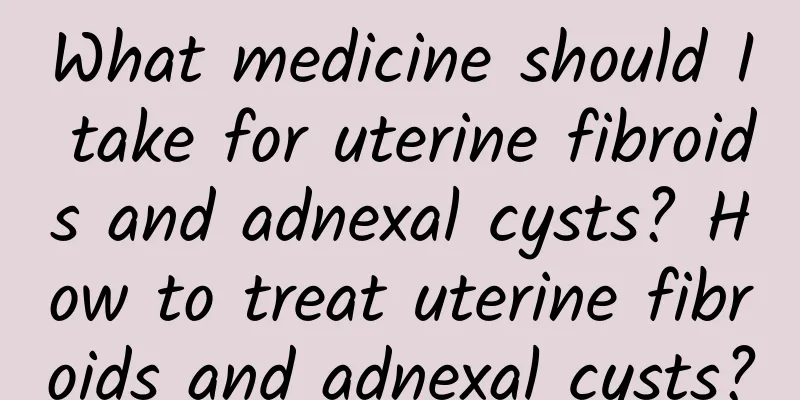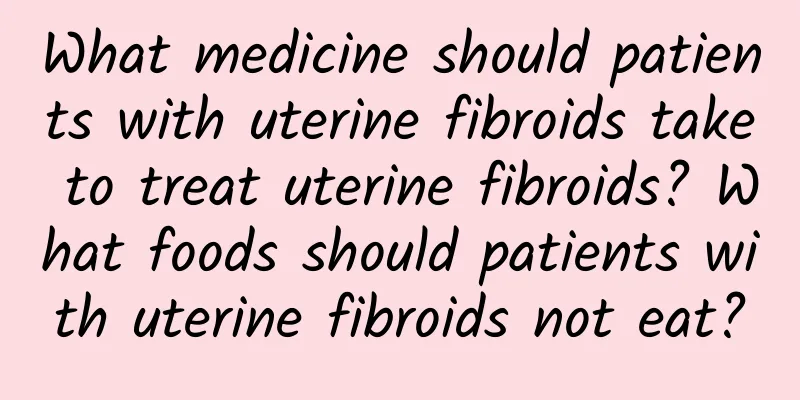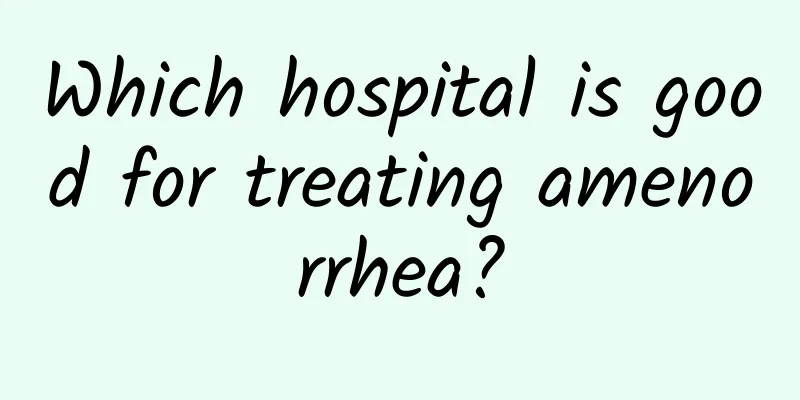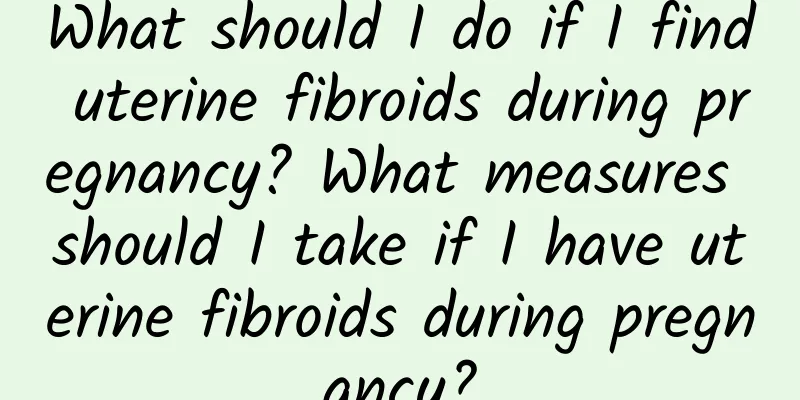What medicine should I take for uterine fibroids and adnexal cysts? How to treat uterine fibroids and adnexal cysts?

|
Uterine fibroids and adnexal cysts are two common gynecological diseases that have a certain impact on women's health. So, how should these two diseases be treated? Is there any targeted drug treatment? First, let's take a look at the meaning and symptoms of uterine fibroids and adnexal cysts. Uterine fibroids are a common gynecological tumor that is formed by the proliferation of smooth muscles in the uterine wall. The main symptoms include prolonged menstruation, increased menstrual flow, abdominal pain, and pressure during urination. Adnexal cysts refer to cystic objects next to the ovaries, fallopian tubes, or uterus. They usually do not cause symptoms, but in some cases, abdominal pain, abnormal bleeding, and difficulty urinating may occur. The treatment of uterine fibroids is generally divided into conservative treatment and surgical treatment. Conservative treatment is suitable for patients whose symptoms are not obvious or who are not planning to get pregnant. Commonly used drug treatments include oral contraceptives and oral progesterone drugs. Oral contraceptives can effectively control the growth of the endometrium, reduce menstrual volume and the size of uterine fibroids. Oral progesterone drugs inhibit the secretion of progesterone, reduce the growth and thickness of the endometrium, and thus alleviate related symptoms. However, these drugs cannot completely cure uterine fibroids, but can only temporarily relieve symptoms. If conservative treatment is ineffective or the condition seriously affects the quality of life, surgical treatment is a necessary option. Common surgical methods include myomectomy and hysterectomy. Myomectomy is suitable for patients who retain their uterus and is treated by removing the fibroid tissue. Hysterectomy is suitable for patients who have completed childbearing or no longer plan to have children and is treated by removing the uterus. There are relatively few targeted drug treatments for adnexal cysts. Generally speaking, small cysts without obvious symptoms can be observed for changes through regular follow-up. For larger or symptomatic cysts, surgical treatment is required. The surgical method can be selected according to the location and size of the cyst. Common surgical methods include laparoscopic cyst dissection, cyst puncture and extraction, etc. Finally, we want to emphasize that for the treatment of uterine fibroids and adnexal cysts, drug therapy can only temporarily relieve symptoms or reduce the size of the tumor, but cannot completely cure it. Therefore, while receiving treatment, patients should also pay attention to adjusting their lifestyle habits and maintain a good diet and work and rest schedule. In addition, regular check-ups are also very important to detect changes in the condition in a timely manner. If the condition worsens further or other abnormal conditions occur, you should consult a professional doctor in a timely manner. Only scientific and reasonable treatment can better protect women's health. In short, uterine fibroids and adnexal cysts are common gynecological diseases, and the treatment methods include drug therapy and surgical treatment. Drug therapy can relieve symptoms, and surgical treatment can remove tumors. However, drug therapy can only temporarily relieve symptoms and cannot completely cure. Therefore, patients should consult a doctor in time and take appropriate treatment methods to protect their health. |
Recommend
Not just for losing weight! 10 reasons why you and I must continue to exercise and keep fit
Everyone knows that developing a good habit of ex...
A 23-year-old woman was diagnosed with vulvar cancer! Her "bad habits" are a wake-up call for everyone! It's worth learning from
"Doctor, I'm only 23 years old, how come...
What are the prescriptions for rectal enema for pelvic effusion?
What are the prescriptions for rectal enema for p...
There are several specific treatments for premature ovarian failure.
Premature ovarian failure can lead to insufficien...
What are the dangers of hyperprolactinemia in the early stage?
What are the dangers of hyperprolactinemia? The s...
Does increased yellow leucorrhea indicate cervical erosion?
Does increased yellow leucorrhea indicate cervica...
What are the precautions for Bartholinitis prevention and care?
Although Bartholinitis is a female disease, few w...
How to completely cure hyperprolactinemia
Treatment for high prolactin. Prolactin is a poly...
What tests are needed for Bartholinitis?
What examinations are needed for Bartholinitis? T...
Will long-term asexuality really lead to premature ovarian failure and endocrine disorders? Gynecologists tell you the truth
Ms. Li is 45 years old and works in a private com...
Chinese medicine can regulate yellow leucorrhea
Traditional Chinese medicine can help regulate th...
Is it normal for women to have cervical erosion and bleeding? Analysis of the causes of bleeding from cervical erosion in women
In life, cervical erosion is a common gynecologic...
Expert advice: Treatment of vulvar leukoplakia
With the continuous improvement of medical techno...
What are the symptoms of cervical erosion in women?
Nowadays, various gynecological diseases are thre...
Causes of dysmenorrhea in women
Women often experience dysmenorrhea during their ...









